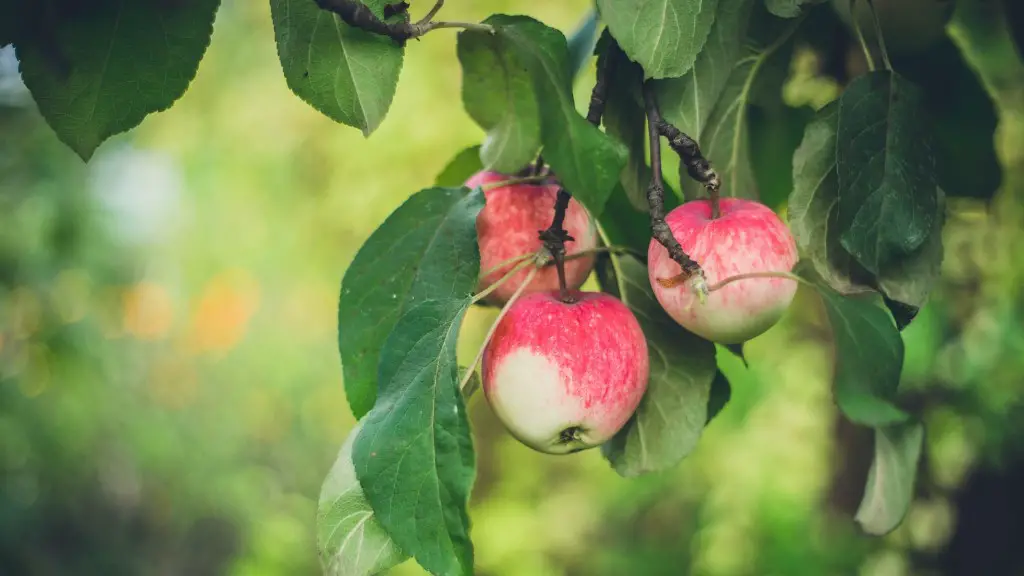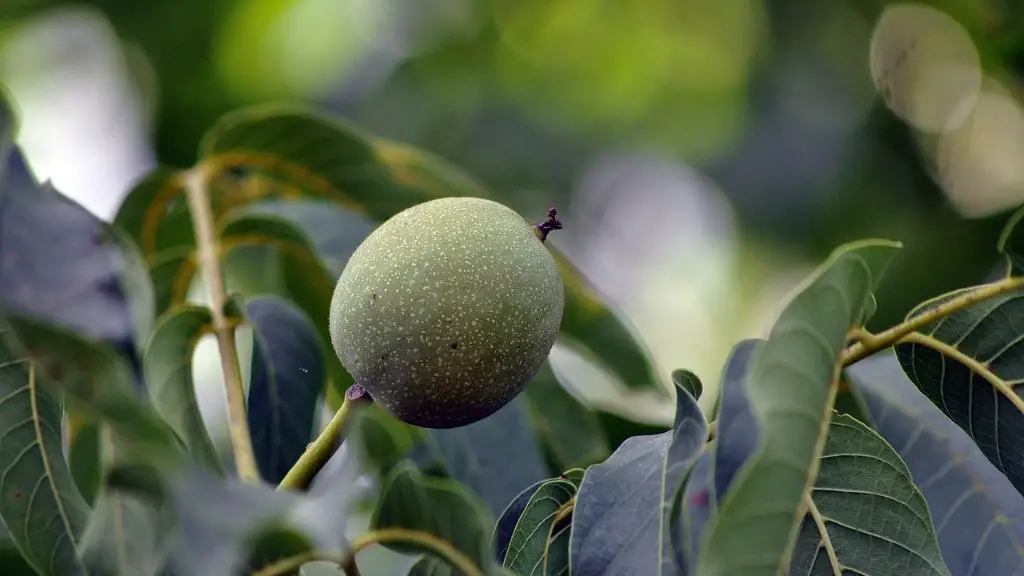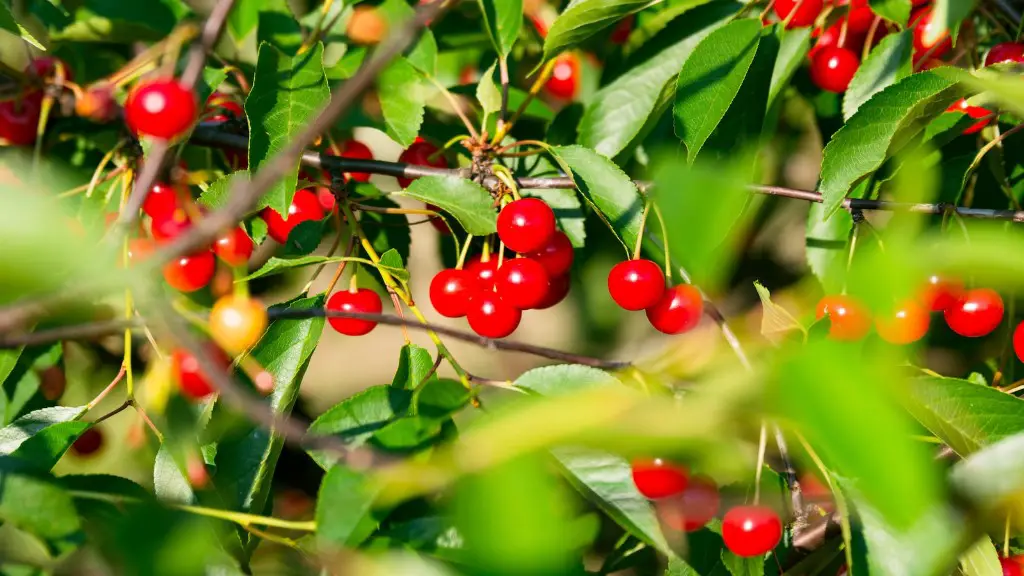Lemon trees, which are members of the citrus family, are perennial shrubs found mostly in warm climates. Generally, lemon trees will bloom in the early spring and flower through the summer. The flowering of a lemon tree is a sign of optimal health and can serve as an indication that the tree is properly nourishing itself. That said, there are a few factors that can affect when a lemon tree blooms and how many flowers the tree will produce in a given season.
One of the most important factors is the amount of sunlight the tree receives. If a lemon tree is planted in direct sunlight and provided with adequate water and fertilizer, it is more likely to bloom within 2-3 months after planting. Trees planted in shady spots will take much longer to start bloom as they will not receive the necessary sunlight.
Temperature is another very important factor. If a lemon tree is planted in an area with very hot summers it will bloom earlier than if it was planted in a cooler climate. Lemon trees are hardy plants that can withstand a wide range of temperatures but if the tree is subject to extreme cold or hot weather it can cause a delay in blooming.
Fertilizer can also encourage a lemon tree to bloom. Applying fertilizer twice a year, in the spring and fall, will help the tree to get the proper vitamins and minerals it needs to thrive. Applying too much or too little fertilizer can cause a delay in the blooming process.
Pruning is also important for lemon trees. Prune the tree lightly, removing dead branches and leaves, to ensure adequate air flow and sunshine. Pruning also opens up the tree structure and encourages more fruit production.
Overall, the blooming of a lemon tree is a sign of health and proper care. The tree will generally flower in the early spring and may continue to do so for several months. Proper placement of the tree, adequate sunlight, suitable temperature, sufficient fertilizer and regular pruning will all ensure that the tree blossoms in the expected timeframe.
Light
Light is one of the most important factors that can influence the timing of when a lemon tree will bloom. For example, if a lemon tree is planted in an area without sufficient direct sunlight and receives too little of it whenever sunlight is available, the tree will take longer to start blooming. In order to ensure that the tree blooms within the expected timeframe, the tree should be planted in an area where it will receive at least 4-6 hours of direct sunlight each day. If needed, trim back any trees or other plants that may block the sunlight from reaching the lemon tree.
In addition, if a lemon tree is grown indoors it is important for the tree to receive adequate lighting as this can make all the difference in when the tree blooms. To ensure the optimal growth of an indoor lemon tree, it should be situated by a south-facing window and positioned in direct sunlight for at least 4-6 hours a day.
Furthermore, supplemental lighting from artificial lights can be used to supplement the tree’s natural lighting. Lights should be placed no more than 12 inches above the lemon tree for best results. When choosing artificial lights, opt for LED bulbs as they produce less heat and consume less energy.
Finally, make sure to keep the foliage clean and dust-free by using a soft cloth. This will help the tree’s leaves to reach out and absorb the maximum amount of light possible.
Temperature
In addition to light, the temperature of the climate can also impact when a lemon tree will start to bloom. Lemon trees generally prefer to grow in warm climates, as temperatures below 20°F can cause damage to the tree’s leaves and branches. As such, if a lemon tree is planted in a cooler climate, the tree may take longer to start blooming.
In order to ensure that the tree thrives in cooler climates, it is important to protect the tree from extreme cold and to water the tree on a regular basis. Additionally, if the tree is planted in a particularly cold climate, the use of thick blankets or tarps may be necessary to protect the tree from frost and ice.
In very hot climates, such as those found in the deserts, the tree should be planted in an area with some protection from direct sunlight. Additionally, in areas with particularly hot temperatures, the use of shade cloth or canvas can help to provide a cool environment for the lemon tree to grow in while still allowing the necessary light to help the tree to bloom.
Finally, it is important to not overwater or underwater the tree. Lemon trees like consistent, but not excessive, water. Too much water can lead to root rot and affect the tree’s ability to bloom while too little water can result in malnourishment and stunted growth.
Fertilizer
Fertilizing your lemon tree is important for optimal growth and bloom. While fertilizer is not necessary for the tree to grow, it can provide the tree with essential nutrients that can help to promote healthy foliage and blooms. Applying fertilizer twice a year, in the spring and fall, will help the tree to get the proper vitamins and minerals it needs to thrive and increase the chances of a productive bloom.
When selecting the fertilizer for a lemon tree, it is important to ensure that it is specifically formulated for citrus trees. The fertilizer should contain beneficial nutrients including Nitrogen, Potassium, and Phosphorus which are essential for healthy growth and blooms. Additionally, it is important to read the instructions on the label carefully to ensure that you do not apply too much fertilizer as this can create an imbalance in the soil which can cause a delay in bloom.
It is also important to note that organic fertilizers are preferred as they are more beneficial for the soil, release more slowly and are more sustainable than synthetic fertilizers. Additionally, organic fertilizers also provide beneficial soil microorganisms which help to break down organic matter and promote healthy root growth.
Pruning
Pruning is an essential part of the care of a lemon tree and can help to encourage blooms. Pruning involves the removal of dead branches and leaves as well as thinning out the canopy to allow for adequate air flow and sunshine. This helps the leaves to receive the maximum amount of nutrients and encourages the proper growth of the tree.
It is important to use sharp, sterile shears when pruning a lemon tree to ensure that the cuts are clean and precise. When pruning, start by removing any dead or diseased branches. Then, work your way up the tree by thinning out the canopy to allow for more air circulation and light to reach the lower branches. Be sure to leave the main stem intact, as it is the primary source of nutrients for the tree.
Finally, it is important to not over-prune the tree as this can weaken the tree’s structure and cause stunted growth. Additionally, removing too many leaves and branches can also reduce the amount of flowers the tree is able to produce.
Watering
Watering is another essential part of caring for a lemon tree and can influence when the tree will bloom. Without proper watering, the tree will struggle to survive and remain healthy. As such, the tree should be watered at least once a week and more frequently during the hotter months.
When watering your lemon tree, it is important to ensure that you are using the correct amount as too little or too much water can cause the tree to become malnourished and fail to bloom. Always check the soil around the tree before watering to ensure that it is not too wet or too dry. If the soil is moist, it means that the tree does not need to be watered and if it is dry the tree should be watered.
Remember to water the tree at the base and to ensure that the water is reaching the root system. Additionally, always water the tree in the morning so the water has time to absorb into the soil before the heat of the day sets in. Finally, it is important to keep weeds and grass away from the base of the tree as these can consume the water before it reaches the tree roots.




